Want to learn how to make herbal tinctures at home and some of the best tincture recipes? Continue reading this article and discover how to make tinctures at home from plants.
Herbal tinctures are easy to make at home, it’s simple alchemy with miraculous effects. Here are a few simple tips if you want to learn how to make herbal tinctures. The best time to prepare herbal tinctures at home is the month of August (in the Northern Hemisphere). August is when most medicinal plants are fully mature and their active healing substances are most potent.
Herbal tinctures, salves, and oils are prepared from fresh flowers and herbs. They are easy to make at home and we believe that no home should lack a handy green pharmacy and reliable help when your health becomes poor. Without further ado, here is how to make herbal tinctures at home.
In This Article You Will Find:
How to Make Herbal Tinctures at Home
Herbal tinctures are essences extracted from plants, obtained by macerating the plants in 40% ABV, rye rakia, or homemade fruit brandy (plums, apples, pears). In some parts of Europe, these alcoholic beverages are made at home following ancient recipes, passed on from generation to generation.
If you don’t find these types of alcoholic drinks handy, you can opt for a 20% concentration of ethyl alcohol for tinctures. Even more, if you wish to make alcohol-free herbal tinctures, you can switch the alcohol to vegetal glycerin. This is how to make herbal tinctures at home.
How to Make Herbal Tinctures
- Fill a bottle or a jar up to the neck with the freshly cut plant (flowers, leaves, stems, or whole plant).
- Pour the alcohol/glycerin on top until it covers the plant completely.
- Close the bottle tightly and place it in a warm place for 14 days (or even longer).
- Shake the bottle every other day.
- Strain and store in amber bottles (with a dropper for internal use).
How to Use Herbal Tinctures
Herbal tinctures can taken both internally, as drops, or used topically, to make compresses, or added to salves or creams. This depends on the herb used and its healing properties. Now you know how to make herbal tinctures at home. Below are 8 amazing herbal tincture recipes using some of the most popular healing herbs from the European flora.
How to Make Herbal Tinctures at Home – 8 Recipes
1. Burdock Root Tincture
Use the well-washed and brushed roots of the burdock plant. Cut them finely and cover them with alcohol. Burdock root tincture is amazing for rheumatic pains and swelling caused by this condition. Use it externally to friction the painful areas with it. Internal uses: menstrual disorders, urinary tract diseases, nerve diseases, facial neuralgia, typhus, rheumatism, ovarian pain, respiratory diseases, lung diseases (pleurisy, emphysema) – 10 drops of burdock root tincture diluted in water, once a day.
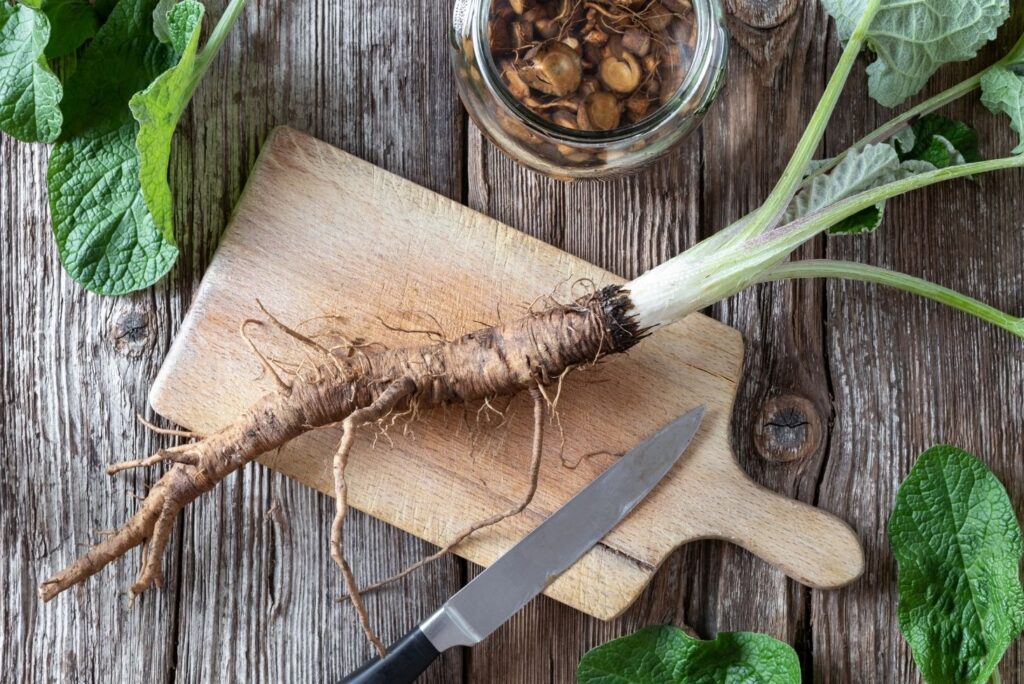
2. Nettle Tincture Recipe
For the nettle tincture, use the roots harvested in spring or autumn. Nettle root tincture is very useful for a wide range of health issues: liver and gallbladder conditions, spleen problems (even tumors), stomach lining inflammation, respiratory issues, stomach cramps and ulcers, intestinal infections, and lung disease. Topically, it is used for hair loss, eczemas, ulcers, painful acne, fungal infections, skin blemishes, sciatica, and nerve inflammation.
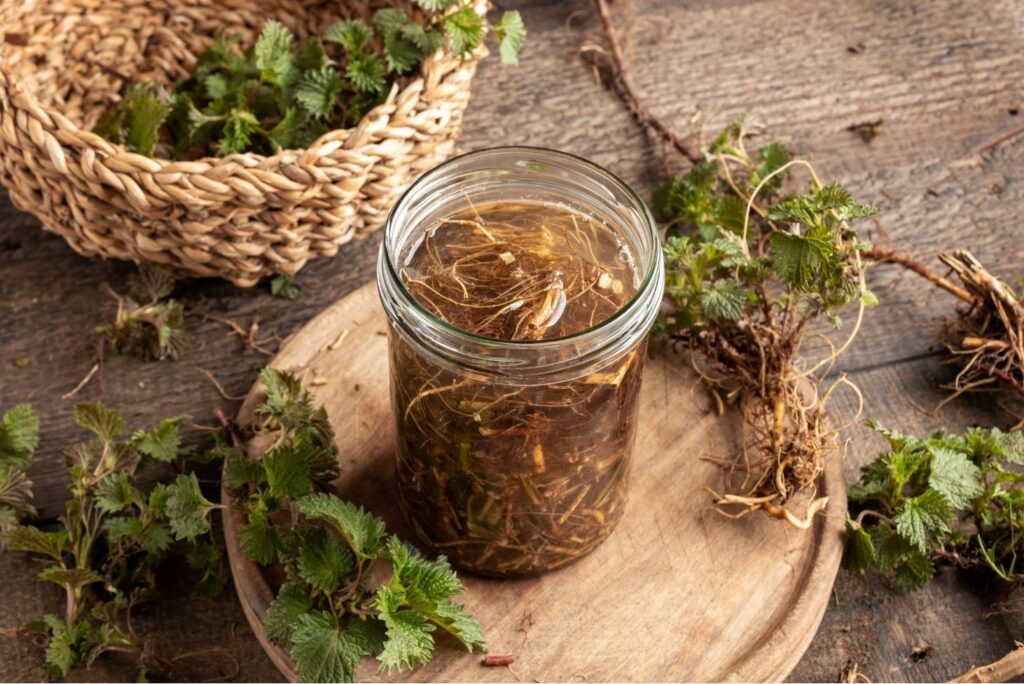
3. Shepherd’s Purse Tincture
When making shepherd’s purse tincture, use the whole freshly-picked plant, finely chopped. This tincture is used externally for muscle atrophy, sphincter fatigue, groin hernia, and intestinal prolapse by rubbing it on the affected areas. It can also be used internally, the usual dosage is 10 drops of the tincture, 3 times a day in a cup of lady’s mantle tea (steep a teaspoon of dried plant in a cup of hot water, infuse briefly, and strain).
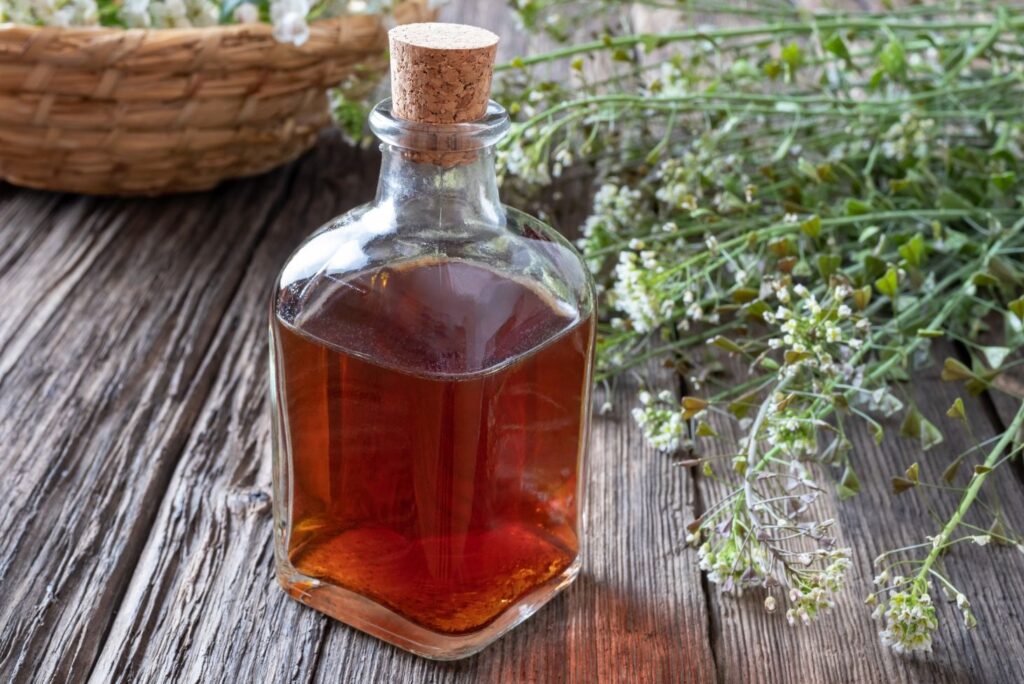
4. St. John’s Wort Tincture Recipe
To make this herbal tincture, macerate two handfuls of freshly picked St. John’s wort flowers (ideally on a sunny day) in one liter of homemade alcohol. Seal and leave the jar in the sun for 3 weeks. St. John’s wort tincture can be used both internally and externally. It is amazing for nervous system illnesses, including neurosis, insomnia, and weak nerves – 10-15 drops in a spoonful of water. Externally, use it to rub painful areas caused by neuralgia.
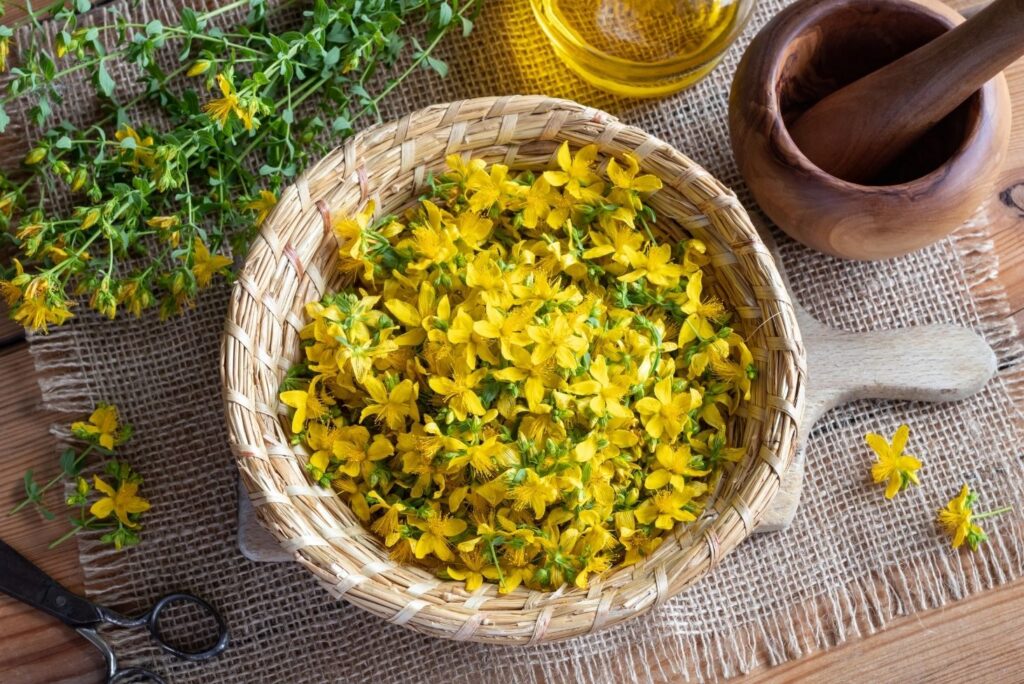
5. Calendula Tincture
To make the calendula tincture, macerate a handful of fresh calendula flowers in one liter of rakia. Calendula tincture can be used topically to make compresses with boiled and chilled water (or distilled water). Calendula tincture compresses are great for wounds, hematomas, muscle strains, cancerous tumors, contusions, bumps, and vaginal discharge (for this, add 10-20 drops of the tincture into the vaginal douche infusion).
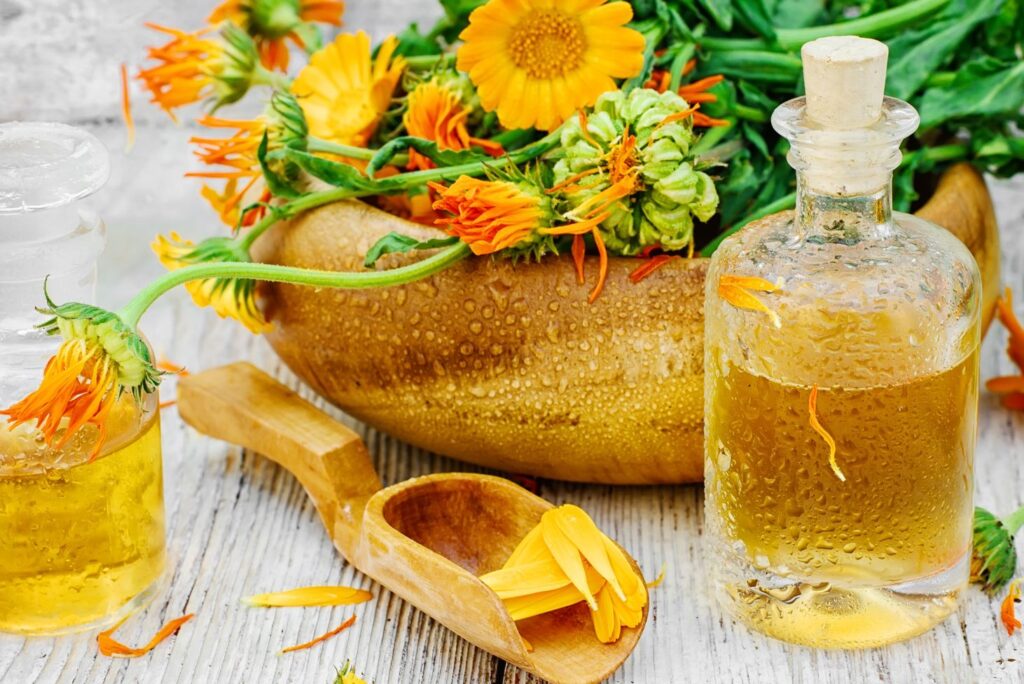
6. Yarrow Tincture Use
To make an effective yarrow tincture, it is best to pick the yarrow flowers on a sunny day. This herbal tincture has powerful healing action on bone marrow and spinal cord problems as it stimulates their blood supply, aiding in osteoporosis and bone fragility. Yarrow tincture is also amazing for irregular periods, menopause, genital cancer, inflammation of the testicles, leukorrhea, lack of periods, migraines, bloody sputum, hemorrhoids, stomach pain, and burns. Dilute 5-10 drops of yarrow tincture in herbal tea or water twice a day, in the morning and evening, before meals. Topically, rub it on the affected areas, multiple times a day.

7. Thyme Tincture
To make thyme tincture, harvest the plant in sunny weather, and use only its stems (dry the flowers and use them to make tea). When used topically, this powerful herbal tincture helps strengthen the limbs of underdeveloped children and people suffering from multiple sclerosis. Rub it in through a simple hand massage. Internally, thyme tincture is used for menstrual disorders, UTIs, mental conditions, facial neuralgia, typhus, rheumatism, ovarian pain, respiratory diseases, and lung diseases (pleurisy, emphysema). The adult dosage is 10 drops of thyme tincture diluted with water or herbal tea per day.

8. Horsetail Tincture
To make this herbal tincture at home, macerate 10 g of the plant into 50 ml of rakia. It is great for kidney and bladder diseases (including stones), accumulations of water in tissues, open wounds, ulcers, hemorrhoids, and foot odor. Put 4-5 drops of horsetail tincture into your herbal tea if you suffer with kidney or bladder problems. You can also use it as a topical disinfectant for various skin conditions and sweaty feet. Wash your feet with natural soap, then rub the tincture very well.
Read Also: 30+ Burdock Root Uses, Benefits, and Amazing Home Remedies
Now you know how to make herbal tinctures at home. In all actuality, if you follow the simple preparation steps and tips above you know how to make herbal tinctures at home and enjoy the healing power of plants in your own home. Share so more people can learn how to make herbal tinctures. Stay healthy, naturally! 💚🌿
Share on Pinterest ❤️



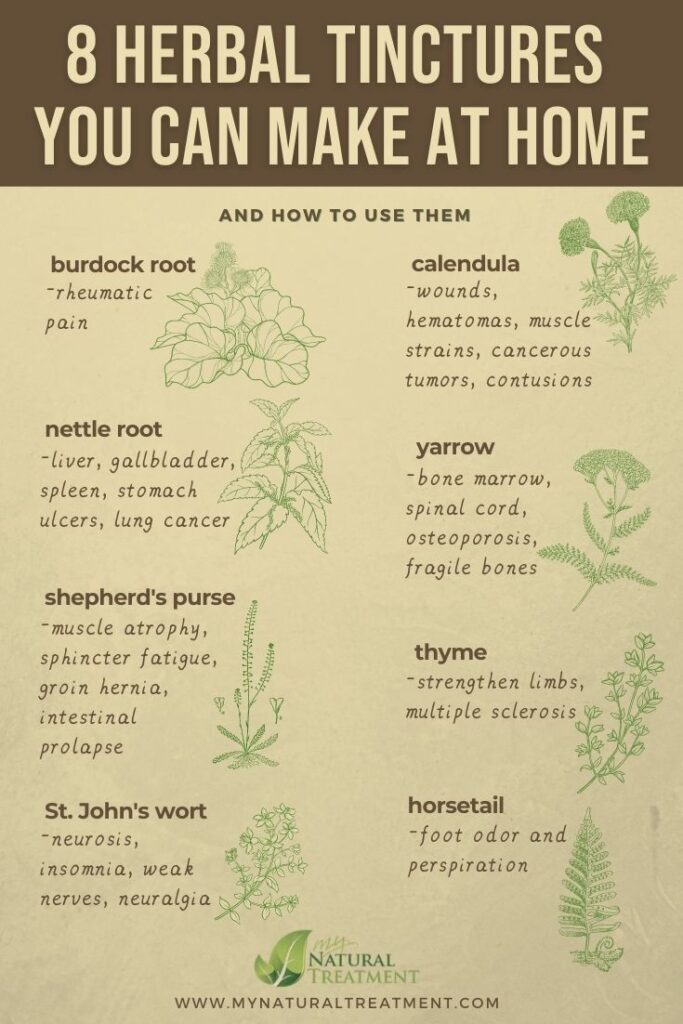
2 comments
I was just wondering how much shepherd’s purse to put in how much water. Is it just a guessing game? Or there actual defined amounts for the tincture
Hi Kathleen and thank you for stopping by. Depending on the volume of glass jar that you want to use, the general rule is to fill the jar up to the neck with finely chopped fresh shepherd’s purse plant and then fill the rest of the jar with either a high quality homemade alcohol, or vodka, or vegetal glycerin if you want to make a non-alcoholic version. You can find the rest of the instructions here: https://www.mynaturaltreatment.com/how-to-make-herbal-tinctures-at-home/#How_to_Make_Herbal_Tinctures_at_Home I hope I helped, much health to you!